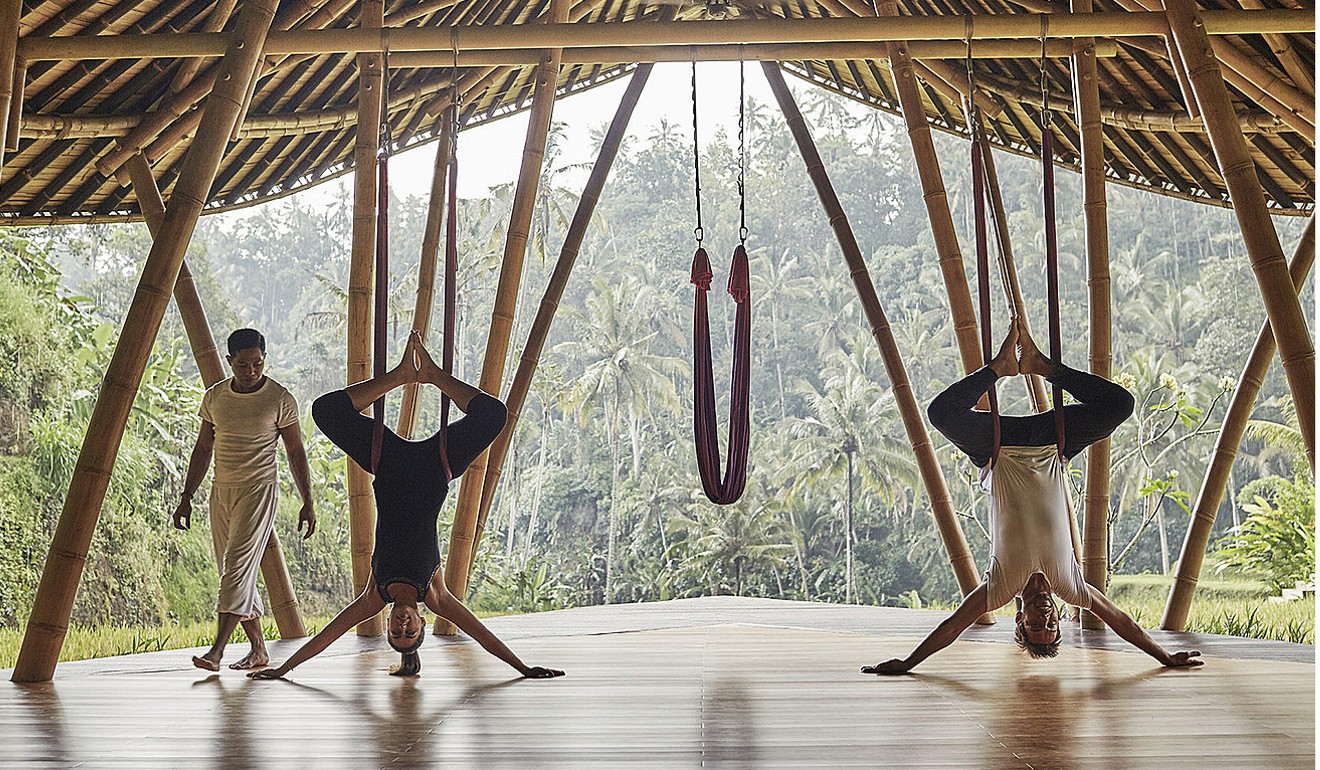
Allegations against ‘sex cult’ yoga retreat in Thailand expose darker side of wellness tourism
Swami Vivekananda Saraswati – real name Narcis Tarcau – has fled the country amid reports of abuse endured by former students and staff members at the world’s biggest tantric yoga school, Agama Yoga, on the island of Koh Phangan
In April, the wellness industry found itself caught in the caustic cross hairs of American iconoclast Barbara Ehrenreich. Her latest book, Natural Causes: An Epidemic of Wellness, the Certainty of Dying, and Killing Ourselves to Live Longer, shoots down society’s obsession with “fitness culture”, mindfulness and the pursuit of spiritual and emotional well-being, as well as health sages, gurus and charlatans in counsellor’s kaftans. People such as Swami Vivekananda Saraswati, whose real name is Narcis Tarcau.
Until recently the head of the world’s biggest tantric yoga school, Agama Yoga, on the Thai island of Koh Phangan, Tarcau has been accused of sexual assault by a number of former members of staff and students, as reported by The Guardian newspaper on September 7.
Yoga retreat or sex cult? Guru faces rape accusations at Thai centre
“Considering the severity of these accusations, Swami has taken the decision to step back from all his administrative and teaching responsibilities,” read a statement on the centre’s website, published on July 26. Tarcau – who is originally from Romania and arrived in Thailand via Rishikesh, the Indian birthplace of yoga – has since fled the country, but the school continues to operate, despite claims describing it as a “sex cult” and accusing its operators of “brainwashing” students into sexual submission.
All of this will sound familiar to those viewers who invested the more than six hours necessary to watch, in its entirety, the Netflix series Wild Wild Country, the astounding documentary about guru/cult leader Bhagwan Shree Rajneesh and his Rajneeshpuram community of uniformly attired followers, who clashed with the inhabitants of an Oregon town (population circa 50), in the United States, when they moved in next door in 1981.
Six sex cults that went well beyond ‘love thy neighbour’
More recently, and much closer to home, yoga teacher Uma Inder was accused of operating a cult at Bali’s Yoga Barn from 2008 to 2016. Journalist Be Scofield, who was first to report on the claims against Tarcau, in July, gathered testimonials from former members of Inder’s community, who recounted episodes of psychological, physical and sexual abuse.
Yoga Barn founder Meghan Pappenheim downplayed the allegations as a “witch hunt” in communication with Scofield, although Inder was let go from the centre.

Which is not to say that all wellness retreats house sects seeking to indoctrinate new members and have their wicked way with them – far from it.
According to Lonely Planet, wellness tourism is the world’s fastest growing travel sector – a product of, and marketed as a solution to, our hyper-connected existence. No longer exclusively the domain of the long-haired and the spiritually superior, wellness has made it into the mainstream, with airlines such as British Airways offering mindfulness videos on long-haul flights and major hotel chains designing fitness and meditation programmes full of alternative therapies and clean eating.
The question remains, however: do wellness tourists actually get well? A report published in the Journal of Alternative and Complementary Medicine, conducted by researchers from RMIT University in Australia, answers with a resounding yes. The observational study, billed as the first scientific examination into the effectiveness of wellness retreats, found that: “Retreat experiences can lead to substantial improvements in multiple dimensions of health and well-being that are maintained for six weeks.”

As with any opportunity to escape from the daily grind, the effects won’t last forever – well, no longer than a month and a half, according to the boffins – and all claims to the contrary should be taken with a pinch of Himalayan pink salt.
Unfortunately, for the alleged victims of Tarcau and Inder, the impact of their experiences is unlikely to fade as fast.
“Being at Agama was the most traumatic experience of my life,” one woman told The Guardian. “I’m not sure I will ever be able to get over what happened there.”
No more monkey business – gibbon touts arrested on Koh Samui
Gibbons, “undoubtedly the most endangered of all ape species”, according to the global conservation body WWF, are famous for their gymnastic displays among the treetops of Asia’s subtropical rainforests. They are not, however, known to be sun-seeking beach dwellers.
Which is why the appearance of a baby gibbon on Chaweng Beach, on Phangan’s neighbouring island, Koh Samui, caused a stir this summer. In footage captured by expat Arkadiy Kulev, a Thai man can be seen touting the tiny ape for photos with tourists, who paid about 100 baht (US$3) for the privilege.
The video was posted to a Koh Samui-specific Facebook group, sparking outrage and leading to the arrest of two men – who were charged with having protected wild animals in their possession without a licence – and the rescue of three gibbons.
For their part, visitors to Thailand should know better than to pose for pictures with any captive animal.
2017 was a record-breaking year for tourism, says UNWTO

It shouldn’t come as any great surprise for regular readers of Destinations Known, but 2017 was a big year for travel. The United Nations World Tourism Organisation recently published its annual Tourism Highlights report, which recorded 1.3 billion international arrivals last year. Tourism spending reached US$1.3 trillion, with Chinese travellers accounting for almost 20 per cent of all tourism receipts.
France, Spain and the US were the three most visited countries, followed by mainland China in fourth place and Thailand 10th on the list, providing the only representation for the region.
The list of the fastest-growing destinations contains a few outliers, however, with West African nation Togo coming in at second, behind Egypt, mountainous microstate San Marino in third and Vietnam fourth.

